|
| A little tour of Jerome’s home to discover the different instruments that
he might used… |
| GIBSON Chet Atkins Nylon String
|
|
I acquired this model in 1983, the year it came out. The model came out with a more narrow neck, but I chose a classic neck. Since most electric nylon string guitars leave much to be desired, this guitar was a really revolutionary… On the stage when I use it, it has a beautiful presence. It has a solid body and has the inconvenience of being fairly heavy (a bit painful to carry around) but it is reliable and easy to use…
Actually, I use it with a Framus amplifier. On stage, I use it with a Chorus pedal to give it different colors of sound, but the natural sound of the nylon strings is still my reference.
|
|
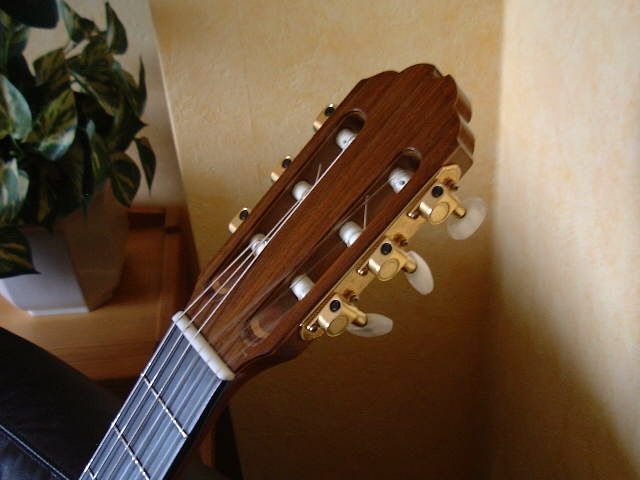
|
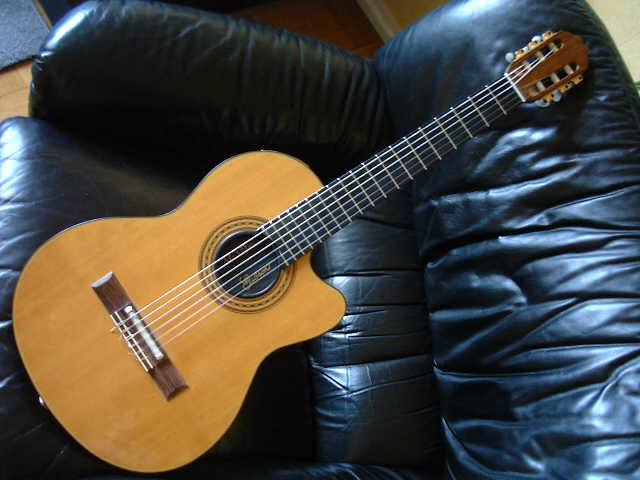
|
| Allan Scwhinn – ACE (Jerome Malaval Model)
|
|
The Gibson has the inconvenience of a solid body and it reproduces the false impression of the sound of the nylon strings, without the vibration of wood and therefore, the lack of natural sound and always sounds a bit contrived to me. My different work in the USA allowed me to discover the American luthiers who have wrestled with this problem, and have found some interesting solutions. This is why I asked ACE Guitars to create a guitar for me.
The head of this company is Allan Scwhinn, a passionate luthier, who took on this project. The neck is slightly thinner than the Gibson, to facilitate the left thumb coming over the fingerboard. The headstock is large, in fact larger than most people prefer! The sound is very precise and the sustain is impressive. For the stage or studio it is a magnificent instrument.
|
|
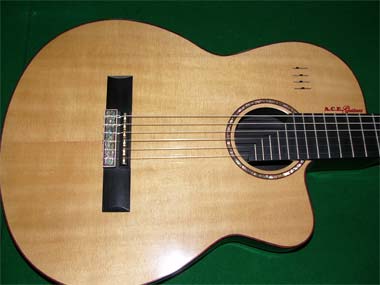
|
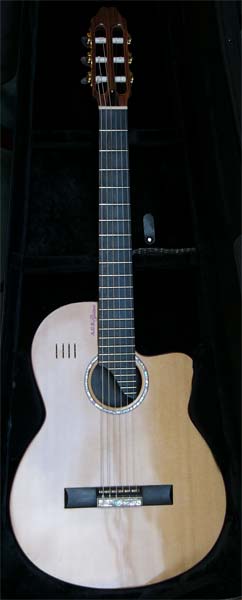
|
|
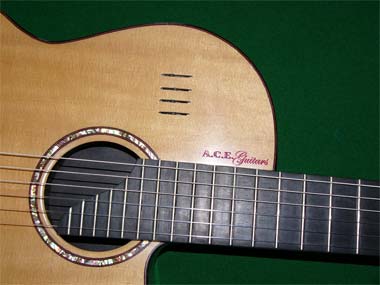
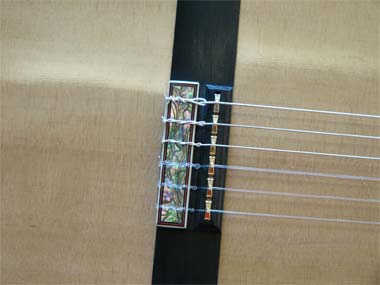
|
|
GRETSCH
6120
|
|
One of the most beautiful guitars that I have ever owned. I had the opportunity to try many Gretsch guitars from the rare models of the 50’s to the more disappointing ones from the 70’. The current production of them is often very good. However, it is important to try many models before finding something that suits you. It isn’t always easy to do since the shops can rarely afford much stock in this price range.
What creates the magic of this guitar is that even when acoustic, it is perfectly balanced.
|
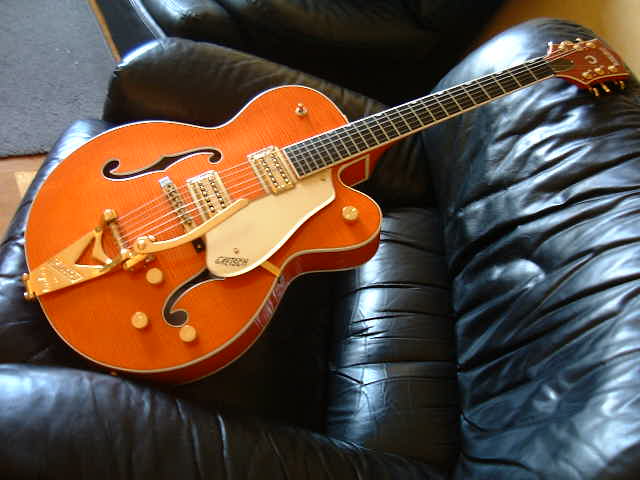
|
|
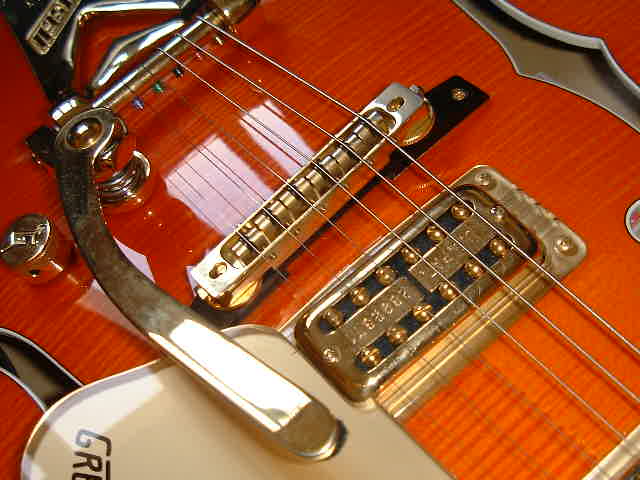
|
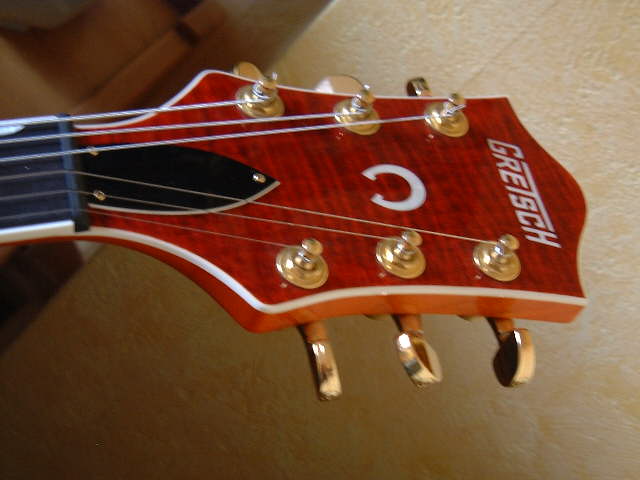
|
Using the Bigsby is always problematic. It is difficult to maintain tuning when using it. This model is set in the factory with a roller bridge, which sets under each string and returns it to it’s original position after each use.
However, there is still friction at the nut. Upon the advice of my friend, Jim Nichols, who has handled the Gretsch since his youth, I had the original nut replaced with a graphite one. It’s like day and night…
|
|
People often ask me how do choose an instrument that is best suited for Fingerpicking. Each person must make his own personal choice with regard to his physical body and taste. The main criteria, whether it be on steel or nylon strings, is the acoustic balance. This is to say that each string must be heard equally. The bass strings must not overtake the trebles, and vice versa. The D and G strings should not dominate.
Once this is accomplished, the comfort and precision of the neck must be considered. Comfort and precision come from the action of the guitar, i.e. the distance between the strings and the fretboard. Whatever your budget might be, I would suggest that you allow between $100 and $150 to have a luthier set up the guitar, because instruments that you find in the store are rough industrial products. A luthier will be able to smooth the frets and reduce the action and set the neck. This will allow you to be “one” with your instrument. This is essential to have pleasure and to then make progress.
|
|
STRINGS
|
|
I’m not too demanding as far as electric strings are concerned. Perhaps because most brands of strings are close in quality. So, I use common brands, like D’Addario, Dean Markley, Darco, etc…
On the Gretsch I use gauges from 010 to 046, which is fairly light.
On the other hand, when choosing nylon strings, I always respect the main criteria, which is having strings that will stay in tune. Surprisingly, some brands (that I won’t mention here) are pitiful and never get in tune, especially the G string. D’Addario Pro Arte are reliable and are reasonably priced I prefer to use the hard tension strings.
|
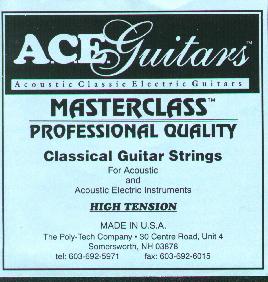
|
|
For a few years I have been using strings made by ACE http://www.ace-guitars.com.
They are bright and perfectly in tune. Again, I prefer high tension.
|
|
|







